[/caption]
During one of the final space shuttle missions, photographer Thierry Legault traveled nearly 4,000 km across various locations in Europe to try and capture the shuttle docked to the International Space Station as the two spacecraft transited across the surface of the Sun.
“Essentially, I was trying to catch the clear sky so I could take images of an event that would last less than a second,” Legault said from his home in France.
This type of dedication to his craft, along with his attention to detail and quality has earned Legault the reputation as one of the top amateur astrophotographers in the world.
Amazingly, he started his astrophotography hobby — and his specialty of imaging objects in front of the Sun — just by chance. And now Legault has been shooting breathtaking images of spacecraft in orbit and astronomical objects and events for nearly 20 years.
“I began in 1993 with one of the first CCD cameras, the first year that CCD cameras were available for amateurs,” Legault said. “It was a wonderful time, because it was a time of pioneers, and it was a revolution after film.”
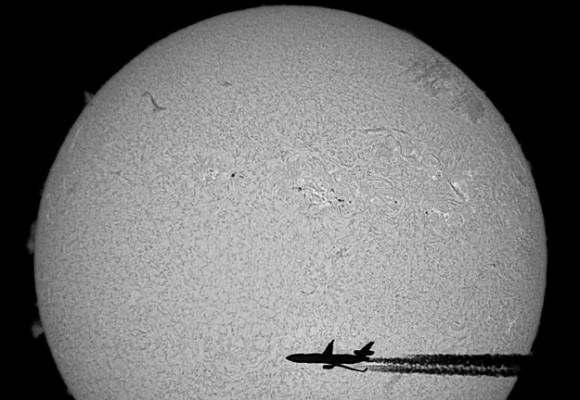
Intrigued by what could be done with digital equipment, he experimented by taking planetary and deep sky pictures and has now amassed a prolific portfolio of stunning images. In 2001 he took the first of the type of images he has become renown for.
“I took a picture of a plane in front of the Sun,” Legault recalled, “and it was published on APOD (Astronomy Picture of the Day), and so now I have taken many images of things in front of the Sun.”
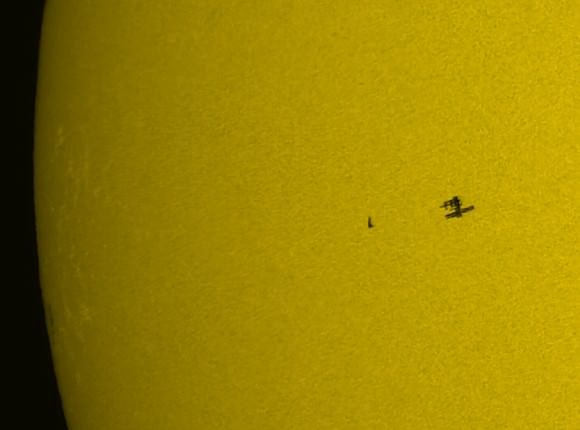
In 2006 he took pictures of the space station and space shuttle side by side just as the shuttle undocked. It was published by newspapers around the world, including a double page in the Guardian, was shown on CNN and other news shows, and was everywhere on the internet.
“It was an incredible success, which was very surprising. This type of imaging is very fun for me, as I like the challenge,” Legault said. “But it is interesting how taking a picture of a spaceship in front of the Sun is really something for non-astronomers, but yet I never received so much interest for all the other astronomy images I have taken.”
Legault said he has received emails and letters from people around the world expressing how much they enjoy his transit images.
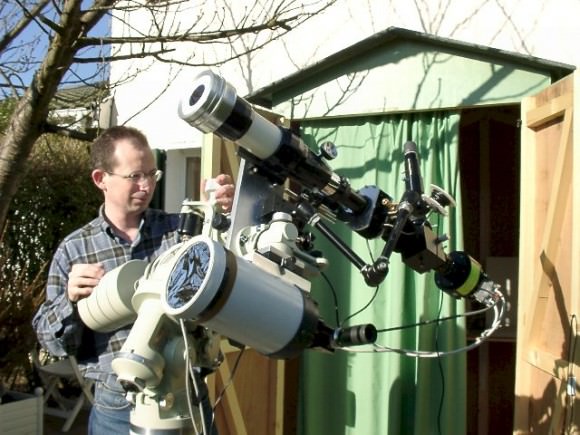
Living in the suburbs of Paris means there are plenty of lights to interfere with his astrophotography.
“Where I live is not a problem for taking pictures of some satellites, the Sun, the Moon and planets,” he said. “For deep space imaging and for the space station, I have to put everything in the van and drive 20-30 kilometers and go to the country; also for solar or lunar transits I have to go to the place where the transit is visible.”
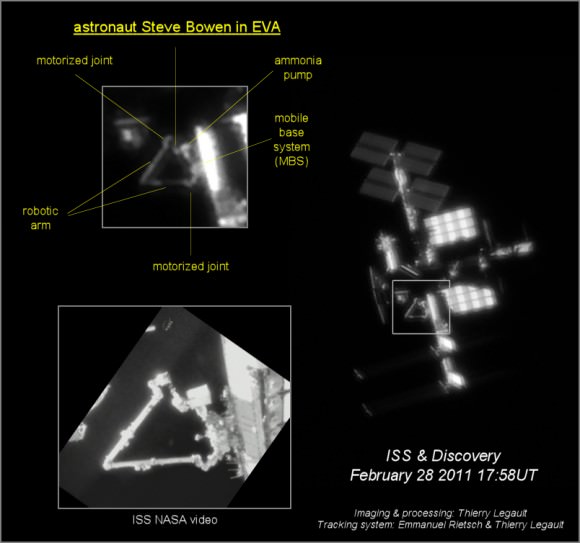
For the STS-131 mission in May of 2010, Legault traveled to Spain, Switzerland, various parts of France, and for the STS-133 mission in February 2011, where he took the first-ever ground-based image of astronaut in spacewalk he drove to Germany, and to both the south and north of France, and between 3,000 and 4,000 kilometers.
All this driving and weeks of preparation is for an event that he never sees live with his own eyes, and usually lasts about a half a second. He uses CalSky.com to calculate the exact moment and exact location he will need to be to capture an event.
“For transits I have to calculate the place, and considering the width of the visibility path is usually between 5-10 kilometers, but I have to be close to the center of this path,” Legault explained, “because if I am at the edge, it is just like a solar eclipse where the transit is shorter and shorter. And the edge of visibility line of the transit lasts very short. So the precision of where I have to be is within one kilometer.”
Legault studies maps, and has a radio synchronized watch to know very accurately when the transit event will happen.
“My camera has a continuous shuttering for 4 seconds, so I begin the sequence 2 seconds before the calculated time,” he said. “I don’t look through the camera – I never see the space station when it appears, I am just looking at my watch!”
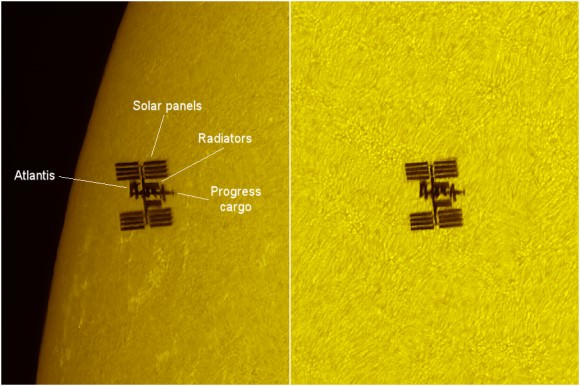
For a transit event, he gets get a total of 16 images – 4 images every second, and only after he enlarges the images will he know if he succeeded or not.
“There is a kind of feeling that is short and intense — an adrenaline rush!” Legault said. “I suppose it is much like participating in a sport, but the feeling is addictive. I did it with a friend two years ago and now he is addicted too.”
Legault added that when he succeeds, it is a very satisfying feeling.
But Legault is not keeping the adrenaline rushes all to himself; he willingly shares his knowhow and techniques.
His website provides a wealth of knowledge about his techniques and equipment
In 2005 he wrote a book (in French) called Astrophotographie, that has sold over 6,000 copies, and he is working on getting it published in English. The book provides information on how to image constellations, stars, comets, eclipses, the Moon, planets, sun, and deep-sky objects, in accessible, nontechnical language. Legault also gives practical advice on equipment and technique, with answers to problems faced by every beginner. He also co-authored another book, “New Atlas of the Moon” with Serge Brunier, and in the March 2012 issue of Sky and Telescope, Legault wrote a detailed article on how to take detailed, ground-based images of the ISS.
Tomorrow on Universe Today, Legault will share his advice for avoiding “bad” astrophotography.

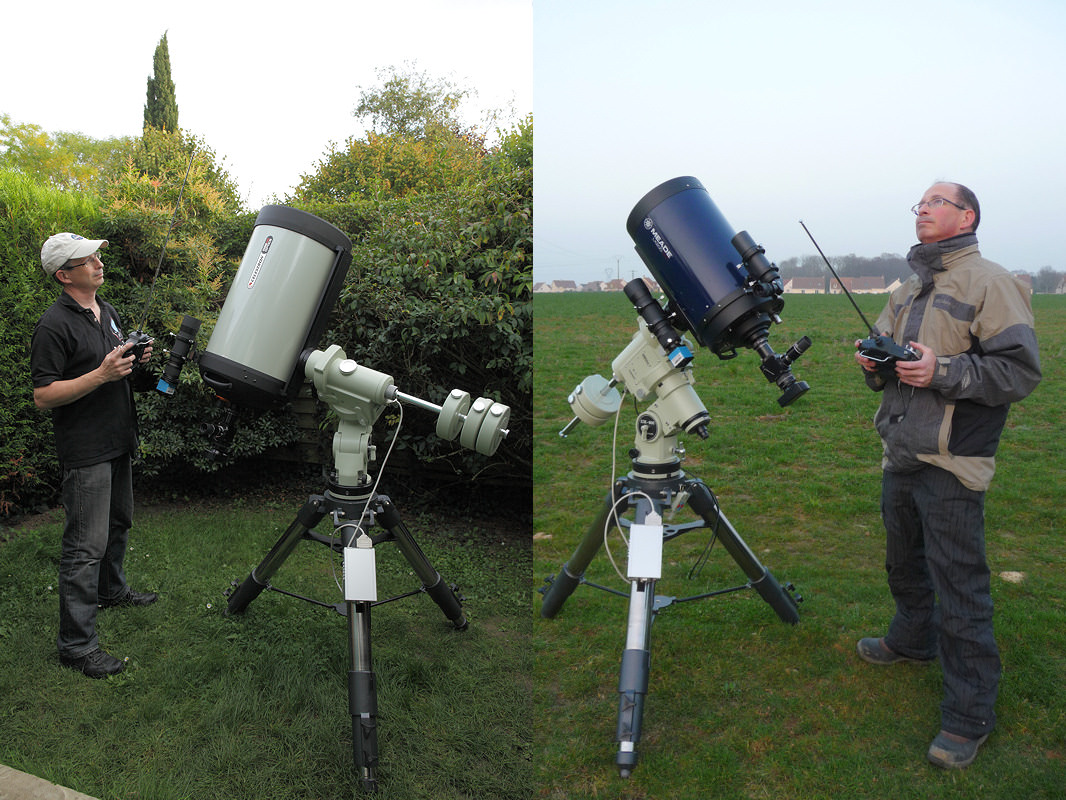
Wow, amazing! Can’t wait for my March issue of S&T 🙂
I really love Legault’s work, I have ISS over solar eclipse pic on my desktop for a year or so.
I love his work. Recently I was at the centerline of an ISS transit of the Sun, and wrote to Thierry for advice. He wrote back with good suggestios. I managed to get two shots of it, it was incredible.
Yet another fan here.
If Mr. Legault could answer a question (about something in the article), it would be great.
During transits, why does he take 4 sets of 4 exposures per second when the event lasts only for a fraction of a second?
He simply shoots as fast as the camera allows and hopes atleast one of the images will be good.
I suspect the dowload time for the camera is something like 0.2 seconds for a full frame.
Oh, never mind. He already answered it in the previous paragraph. There’s a two-second “buffer” period.
Wow, impressive toys! I got this with my much humbler setup:-
http://www.flickr.com/photos/thedavewalker/6156483891/
and
http://www.flickr.com/photos/thedavewalker/5524165830/
Lots to learn still…!
Wow, impressive toys! I got this with my much humbler setup:-
http://www.flickr.com/photos/thedavewalker/6156483891/
and
http://www.flickr.com/photos/thedavewalker/5524165830/
Lots to learn still…!